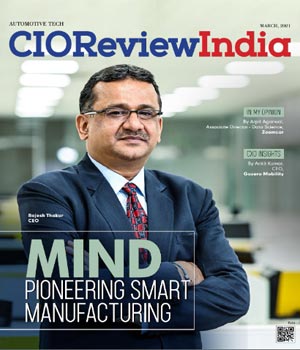
Effective Strategies for Successful SAP Project Execution
Subrata Roy, IT Head, Lux Industries
 Subrata Roy, IT Head at Lux Industries, recently shared his insights with CIOTech Outlook on the critical success factors for SAP implementations. He emphasized the importance of business-led planning, realistic scope-setting, robust testing strategies, and aligning SAP initiatives with evolving business goals to ensure long-term success.
Subrata Roy, IT Head at Lux Industries, recently shared his insights with CIOTech Outlook on the critical success factors for SAP implementations. He emphasized the importance of business-led planning, realistic scope-setting, robust testing strategies, and aligning SAP initiatives with evolving business goals to ensure long-term success.
Subrata Kumar Roy is a seasoned IT leader with over 30 years of experience in enterprise technology, digital transformation, and strategic IT leadership. Currently serving as the Chief Information Officer for Vertical A at Lux Industries Limited, he leads the company’s digital initiatives, aligning IT strategy with business goals to drive innovation, efficiency, and growth.
How can organizations ensure that project planning and scope-setting are detailed and realistic to avoid downstream issues?
While SAP projects are often led by IT teams, true success hinges on business ownership. Projects driven by business leaders—with IT in a supporting role—experience significantly fewer failures. Early involvement of business stakeholders ensures that project objectives are aligned with organizational goals and that implementation partners are properly oriented. Without this alignment, IT teams may proceed based on technical preferences, potentially overlooking key business requirements.
How can organizations accurately assess technical risks early and plan for contingencies?
SAP rarely functions in isolation; it typically integrates with multiple systems. Therefore, identifying integration points during the planning phase is essential. These integrations must be incorporated into both the project plan and the User Acceptance Testing (UAT) phase. Testing SAP alongside connected applications during UAT and integration testing helps uncover and resolve technical issues before go-live, reducing the risk of disruptions.
What steps have to be taken to ensure data integrity and minimize disruption during the migration process?
Traditional data migration methods—relying on templates and manual processes—are no longer sufficient. A more effective approach involves using data management tools and a dedicated team. The process should begin with extracting and cleansing data from legacy systems, aligning it with SAP standards, and conducting mock migrations during UAT. Leveraging AI-powered tools can further streamline data migration and minimize errors. A focused team should be tasked with data cleansing and validation to ensure accuracy and consistency.
What structured testing strategies can be used to uncover defects early and ensure system reliability?
Business involvement in testing is critical. Unit testing should be conducted by consultants and core team members, followed by end-to-end scenario testing in the quality environment. For example, executing a complete procure-to-pay cycle—including account postings—helps validate system performance and integration. Scenario-based testing ensures that all business processes function seamlessly, reducing the risk of technical issues during go-live.
How do organizations ensure all users are adequately trained and equipped to use the system post-implementation?
User resistance is common, especially when transitioning from legacy systems. A 'train-the-trainer' model is highly effective: identify key users across departments (procurement, sales, logistics, finance, etc.) and provide them with role-specific training. Interactive, audiovisual manuals tailored to specific job functions enhance learning and retention. Post-implementation, a responsive support system—including a help desk and emergency contact options—is essential to address user concerns and ensure smooth adoption.
What are the key strategies that will ensure the long-term success of an SAP project in the coming years?
Long-term success begins with clearly defined project objectives and a phased implementation strategy. Initial phases should focus on stabilizing core ERP systems before introducing advanced tools like WMS. SAP implementation plans must align with the organization’s growth strategy and remain adaptable to evolving business needs.
While analytics are often introduced in later stages, early deployment—shortly after the first quarter audit—can provide immediate value. Giving management and users access to real-time data insights early on enhances decision-making and demonstrates the tangible benefits of the SAP system.
CIO Viewpoint
Why Foolproof Facial Recognition Is Key Against...
By Joseph Sudheer Thumma, Global CEO & MD, Magellanic Cloud
National Technology Day 2025: Powering Progress...
By CIOTech Outlook Team
Aligning IT Roadmap with Business Objectives: A...
By Subhash singh Punjabi, CISO & Head Enterprise Architecture, Deepak Fertilisers & Petrochemicals Corporation Ltd
CXO Insights
Tech Landscape of In-Cabin Experiences and...
By Sanjay Saha, India Country Manager, Synaptics
3 Focus Areas For An Autonomous Driving Revolution
By Varun Chhabra, Vice President, Product Marketing Cloud, Dell Technologies
The Electrified Car Industry Must Reimagine its...





.jpg)
.jpg)
.jpg)





